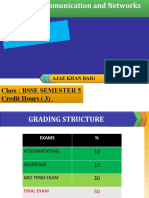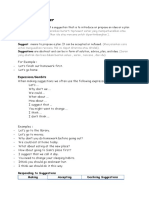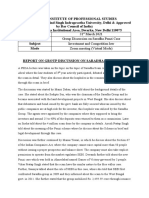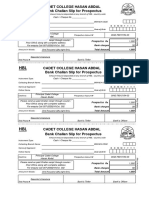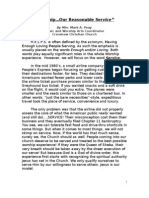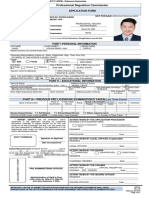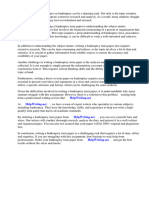Created by: خالد عالء السيد
phone : 010 180 279 70
Fundamentals of Communications Systems
The fundamental purpose of a communications system is the exchange of data between two parties.
This process involves several key components and tasks.
Components:
• Source: Generates the data to be transmitted (e.g., telephones, personal computers).
• Transmitter: Transforms and encodes the information into electromagnetic signals for
transmission (e.g., modem).
• Transmission System: The medium through which the signal travels (e.g., single line, complex
network).
• Receiver: Accepts the signal, converts it into a usable form for the destination device (e.g.,
modem).
• Destination: Takes the incoming data from the receiver.
Page 1
Communications Tasks
Efficient communication requires various tasks:
• Transmission System Utilization: Efficient use of shared transmission facilities through
techniques like multiplexing and congestion control.
• Interfacing: Establishing connection between the device and the transmission system.
• Signal Generation: Creating signals suitable for propagation and interpretation by the receiver,
conforming to system and receiver properties.
• Synchronization: Ensuring timing alignment between transmitter and receiver, including start/stop
and signal element duration.
• Exchange Management: Defining conventions and protocols for two-way communication,
including connection establishment, turn-taking, data volume, format, and error handling.
• Error Detection and Correction: Addressing signal distortion during transmission, crucial for
reliable data transfer.
• Flow Control: Preventing the source from overwhelming the destination by sending data faster
than it can be processed.
• Addressing and Routing: Identifying the destination and selecting a path through the
transmission system.
• Recovery: Restoring the system to a prior state in case of interruption during an information
exchange.
• Message Formatting: Agreement on the format of exchanged data (e.g., binary code for
characters).
• Security: Ensuring only the intended receiver receives the data and that data integrity is
maintained.
• Network Management: Configuring, monitoring, managing, and reacting to failures and overloads
within the system.
Page 2
Data Communications Model Example:
Electronic Mail
Using electronic mail as an example, consider the processes involved:
• The message is buffered in the PC's memory as a bit sequence.
• The PC's transmitter converts this bit sequence into a signal representing bits on a communication
bus or cable.
• This signal is transmitted over the network.
• The receiving PC's receiver interprets the received signal, reconstructing the bit sequence.
• The message is then displayed to the user.
• Error handling and recovery are possible processes if errors occur during the transmission.
Page 3
Transmission of Information
• Transmission lines: The fundamental building blocks of network infrastructures.
• Transmission Media: Fiber optic and wireless (satellite, cellular) technologies are used.
• Transmission Efficiency: Multiplexing and data compression are used to maximize utilization of
available bandwidth.
• Multiplexing: Enables multiple devices to share a transmission facility.
• Compression: Reduces data size, allowing smaller transmission capacity to meet demands.
Page 4
Communication Techniques
Networks
• Integration: Communication systems can handle various forms of data simultaneously (voice,
data, images, video).
• Wide Area Networks (WANs): Employ either circuit switching or packet switching (frame relay,
ATM) to transmit data across large distances.
• Circuit Switching: Dedicated communication path is established between two points (e.g.,
telephone network).
• Packet Switching: Data is broken into small packets and routed through the network, not
requiring a dedicated path.
• Frame Relay: Packet switching with reduced overhead, suitable for high data rates and low error
rates.
• ATM (Asynchronous Transfer Mode): Fixed-length packets (cells) for reduced processing
overhead compared to frame relay, operating at higher speeds (10s, 100s of Mbps to Gbps).
• Local Area Networks (LANs) and Wireless Networks are covered in the text.
• Internet: A global network of networks.
Page 5
Internet Architecture
• Central Office (CO): Telephone company termination points and switching equipment.
• Customer Premises Equipment (CPE): Telecommunications equipment on the customer's
premises.
• Internet Service Provider (ISP): Provides access to the Internet.
• Network Access Point (NAP): Major interconnection points for ISPs.
• Network Service Provider (NSP): Provides backbone services to ISPs.
• Point of Presence (POP): ISP or telephone company sites with telecommunications equipment.
Page 6
Exam Questions
Instructions: Answer the following questions, citing the page numbers where the answers can
be found.
1. What is the fundamental purpose of a communications system? (Page 1)
2. Name the five key components of a communications system. (Page 1)
3. Describe the role of the transmitter in a communications system. (Page 1)
4. List at least five key communications tasks. (Page 2)
5. Explain the concept of transmission system utilization. (Page 2)
6. How does multiplexing contribute to transmission system utilization? (Page 2)
7. What is the difference between circuit switching and packet switching? (Page 5)
8. What are the advantages of ATM over frame relay? (Page 5)
9. What is a central office (CO) in the context of Internet architecture? (Page 6)
10. What is the role of an ISP in the Internet? (Page 6)
11. What is a POP in Internet architecture? (Page 6)
12. Give an example of a device that serves as a source in a communications system. (Page 1)
13. Briefly explain the transmission of a message in electronic mail, highlighting the components
involved. (Page 3)
14. What are two key techniques for increasing transmission efficiency? (Page 4)
Answer Key: The answers to the questions are in the preceding sections, corresponding to the
page numbers indicated above.
Page 7



























